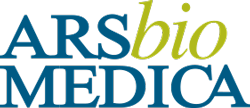What is hydrokinesiotherapy?
The term hydrokinesiotherapy derives from the Greek words “ydor” (water), “kinesis” (movement), and “therapeia” (therapy). Currently, this term identifies a branch of rehabilitative medicine that harnesses the physical properties of water for therapeutic and rehabilitative purposes. The use of this method is varied: it can be applied to orthopedic, traumatological, neurological, lymphatic, cardiac, pediatric pathologies, etc., without the need for swimming skills. The goal of these rehabilitative proposals in water is not to replicate what can be done in a gravitational environment but to promote learning processes, perceptual work, and balance-seeking using the properties offered by this microgravity environment. Therefore, water is an environment where it is possible to create and hypothesize rehabilitative modalities that must always be individualized and aimed at achieving concrete objectives, never ends in themselves. It is appropriate to consider hydrokinesiotherapy as a complementary and synergistic treatment to dry physiotherapy sessions, not as a replacement.
Water, as a therapeutic setting, is an environment that allows the maximum expression of the psychomotor potential of patients by exploiting some fundamental principles of neuromotor rehabilitation and the physical laws of water. There are three main physical properties exploited in Hydrokinesiotherapy:
- Buoyancy;
- Resistance to movement;
- Hydrostatic pressure (Pascal’s Principle).
The temperature generally used in water during hydrokinesiotherapy sessions, except for specific situations related to specific pathologies, ranges from 31°C to 33°C.
The A.S.P. Method
When discussing Hydrokinesiotherapy (IKT or rehabilitation conducted in water), it is not possible to think of performing the usual rehabilitation techniques done on land in the water because the osteoarticular, musculotendinous, and neurological systems behave differently in water compared to when the patient is dry. The A.S.P. method was born from the need to develop a new technique that primarily considers the physical properties of water and the morphofunctional situation of the subject. The Sequential Propaedeutic Approach is a working method performed in water, the principles of which emerge from its definition. By Approach, we mean all the procedures put in place for the adaptation, evaluation, and aquaticity of the patient in relation to the treated pathology, while Sequential and
Propaedeutic are the characteristics of the work done. It is an approach, a method of assessing and treating the patient in water subjected to Sequential exercises, i.e., of increasing difficulty, so that each subsequent exercise is proposed only once the previous one has been acquired, proceeding from simple to complex, and Propaedeutic because it proposes sequences of exercises that initially allow the patient to acclimatize, gain confidence, and adapt to the water and subsequently, by increasing the difficulty of the proposed exercises, allows for the improvement of performance until the total autonomy in water is achieved. The sequential nature of this approach is allowed by the possibility of increasing or decreasing the difficulty of the exercises by varying some parameters:
- Use of aids: these are floating elements that, depending on their use, can provide support, resistance, or become an obstacle, stabilizing or destabilizing balance. They can be of variable or non-variable volume.
- Volume of aids: the volume variation is related to the goal being pursued. In the case of a doughnut, it will be facilitating if deflated and more destabilizing if inflated because it will increase hydrostatic pressure.
- Water level: the higher the level, the higher the difficulty.
- Surface area: a larger surface increases stability, while decreasing it makes the position more unstable.
- Lung volume: human respiratory volume is incompressible; with inspiration, the patient’s body will emerge, with expiration, it will immerse, a characteristic exploitable in exercises when better aquaticity has been achieved.
- Speed of movement execution: a slower movement is more controlled, easy to internalize and learn but harder to control; a faster one requires more effort because it increases hydrodynamic resistance and water turbulence but requires less control.
- Weight: the relationship of buoyancy between immersed and non-immersed parts may vary.
- Presence of fixed points: they support the patient, especially at the beginning of the treatment, to build confidence in the environment and gradually decrease and eliminate them.
Varying these parameters allows for a rehabilitative path of increasing difficulty. However, it is essential to focus on adaptation, which is considered an integral part of the treatment, thanks to which the results will undoubtedly be better with a patient who is confident and comfortable in the environment. This also has a social aspect because the rehabilitation path aims to make the patient independent in the water environment, autonomy that can then be utilized outside the rehabilitation context.
The objectives of the A.S.P. method, regardless of the type of pathology, can be summarized as follows:
- Functional recovery;
- Analytical recovery;
- Psychomotor recovery;
- Improvement of respiratory function;
- Improvement of cardiovascular function;
- Improvement of bladder and bowel function;
- Recreational, playful, social, and sports objectives.
Aquatic rehabilitation is aimed at patients with the aftermath of various pathologies affecting:
- Central nervous system (CNS).
- Peripheral nervous system (PNS): spinal cord injuries.
- Orthopedic-traumatological: joint arthroplasty, ligament reconstruction, meniscectomy, scoliosis, herniated discs, joint dislocations and sprains, post-surgical outcomes, vertebral pain, osteoarthritis, osteoporosis, amputations, shoulder pathology (painful shoulder, periarthritis, capsulitis).
- Vascular: mastectomy, upper and lower limb lymphedema.
- Psychomotor disorders: of cerebral, dysfunctional and/or characterial origin, autism, relational issues, motor clumsiness.
- Rheumatology: osteoarthritis, gonarthrosis, coxarthrosis, rheumatic diseases, rheumatoid arthritis.
- Neuromuscular syndromes.
- Multiple sclerosis.
- Motor coordination disorders (ataxia).
- Spina bifida.
- Cardiac pathologies (in collaboration with specialist doctors).
- Pulmonology: Respiratory insufficiency (e.g., respiratory training).
Contraindications to entering the water are:
- Any disease in the acute phase.
- Severe coronary diseases.
- Severe respiratory diseases.
- Acute dermatological problems.
- Pressure ulcers.
- Unhealed wounds.
- Sinusitis, bronchitis.
Do you need a medical visit or an exam?
Choose the best care for yourself
Choose the best care for yourself



